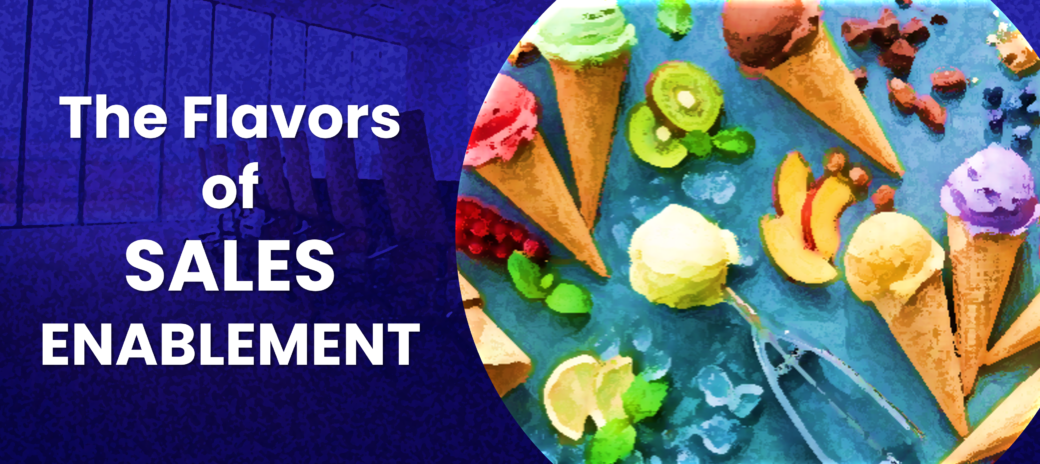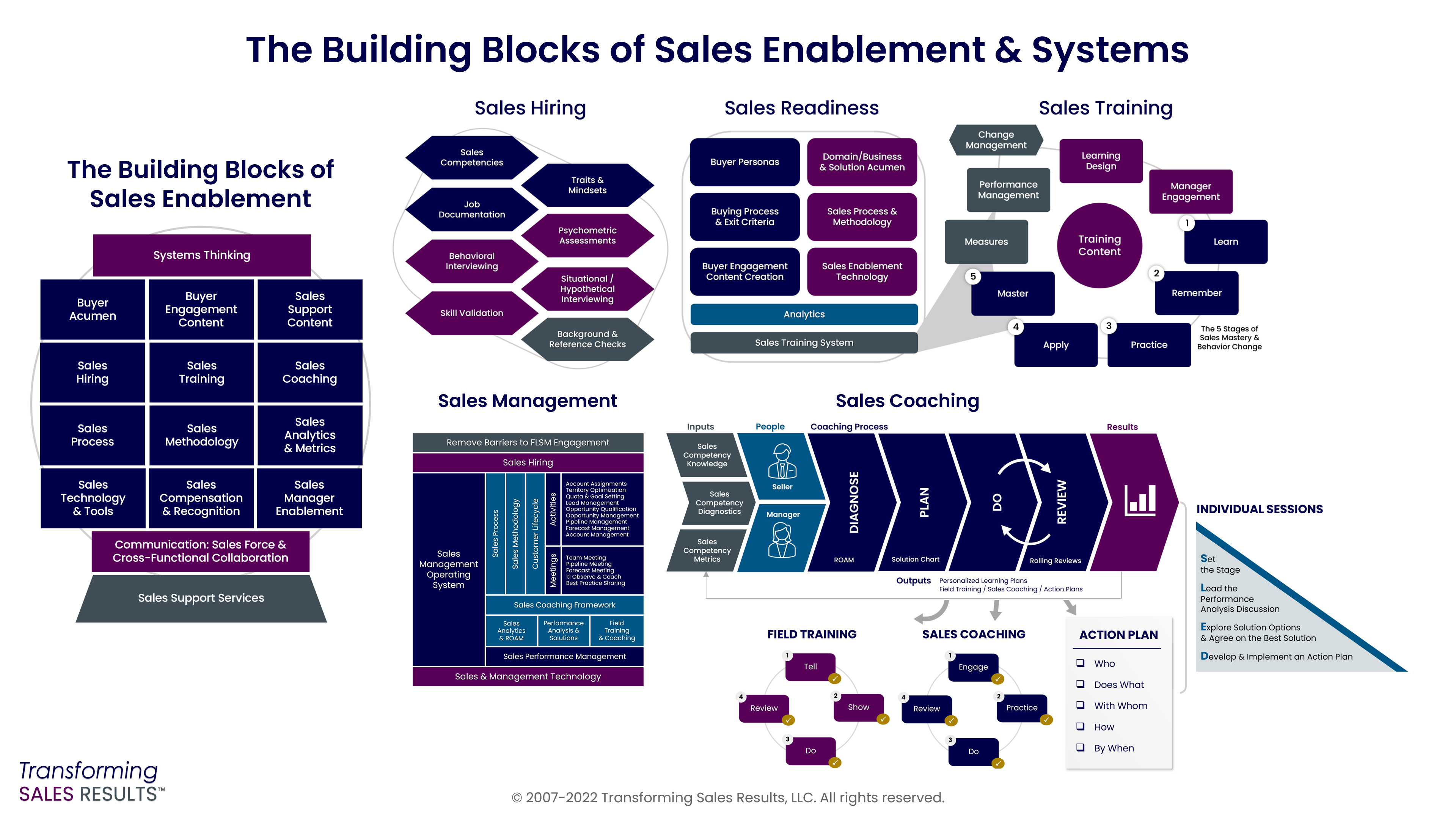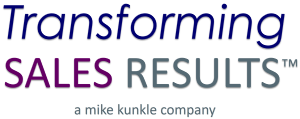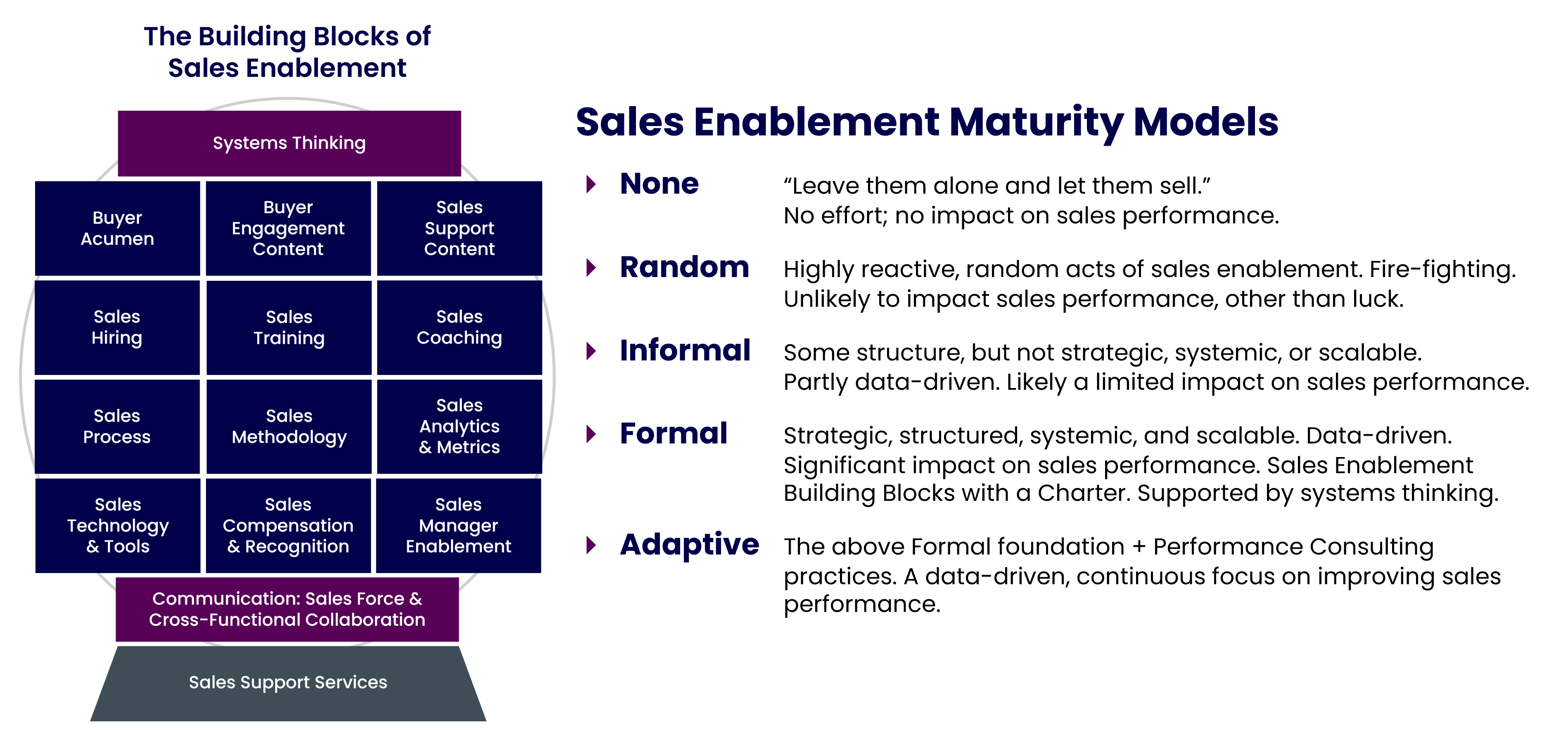The Flavors of Sales Enablement

I have always struggled with blanket, whitewash advice. I know that the frequency of how often I say, “It depends,” is annoying to some people. It’s equally annoying to me when people proffer out-of-context advice, presented from a position of authority, that is based on limited experience or expertise.
Unfortunately, this seems to be rampant right now on social media, especially on LinkedIn where the megaphone of media and the barrage of branding has made everyone an “expert.” Nowhere is this more out of control than in the sales profession and our very own subset of sales enablement.
For example, I see a lot of advice recommending what enablers should do. What I don’t see enough of, is advice on how to figure out what to do. (For more on this topic, see this post on LinkedIn about what real expertise looks like.)
Not All Sales Enablement is the Same
Sales enablement is not the same everywhere. Sadly, some of this is because so many define it differently, but there are two other factors at play, as well. The first is your current level of sales enablement maturity, and the second is the environmental context or where you work.
Let’s look first at the maturity level.
DIMENSION 1: Your Sales Enablement Maturity Level
I’m not the only person to discuss maturity models for sales enablement, so there are some other definitions out there. Most are fairly closely aligned, although some use different terminology. Here are the five progressive levels as I see them.
[click the image to open a larger version]
It’s my belief that you’re not really doing “sales enablement” until you get to the Formal Maturity Level, where it’s strategic, structured, systemic, scalable, and data-driven. That said, I want to be crystal clear that I am not judging or knocking those who are not there yet, but who are working to get there.
It’s not like enablers can magically transport to this level, especially if they’ve been hired or promoted to start and build an enablement practice at their company. I have much respect for those who are on the journey, often swimming upstream like a trout. It just happens to be my opinion that until you get there, you are “building” your practice. Once you arrive, then you can lead and manage your practice. Then, when possible (based on top-down support and leadership appetite), you can evolve to the Adaptive Maturity Level (which crosses the border into Performance Consulting and delivers the most value and ROI).
I also recognize that people, maybe even you, might want to debate my beliefs here. I’m firm in my resolve because if we define sales enablement as anything less, I believe we devalue what we can deliver and open the door for critics to show how enablement doesn’t make a difference. Multiple studies from CSO Insights and Sales Enablement PRO have shown that results from enablement efforts increase as you move through the maturity levels, so you may debate all you want, but I’m sticking with that story.
[click the image to open a larger version]
SIDEBAR: In a budding enablement career, you may take opportunities where you know (or believe at the outset) that you won’t be able to go all the way. That’s okay. I often use an anatomy analogy for this, and say that you’re developing the brain, heart, guts, spine, and muscle to create a replicable, repeatable, and scalable approach to implementing sales enablement effectively. There is real value in that. My suggestion would be to look for successive opportunities to repeat your past successes, and evolve to the next level. Wherever you are today, if you’re doing this, I have tons of respect for you. You are the reason I wrote The Building Blocks of Sales Enablement, published this eBook, share so much free content, and am supporting Felix Krueger of FFWD in launching a course and learning experience about the Building Blocks (with community support and group coaching). Stay the course, and strive to make an impact with enablement. As a music professor told me many years ago:
“Be pleased, but never satisfied.”
~ Don Stanley, former Music Educator
Okay, back to our maturity models. At different stages of your maturity journey, you’ll need to do different things, right? It’s much like the thinking in Marshall Goldsmith’s excellent book, What Got You Here Won’t Get You There.
Random
At this level, you may be assigned initiatives or projects and be an order-taker. You may be at the mercy of a Master of Disaster, or a leader who overreacts to the very last thing that went wrong, careening off into a new direction each time. As you respond to requests, strive to educate others, use data and insights, nurture leaders and influencers with expert content, and work to create a coalition with those you collaborate with unofficially but most regularly, to build toward a more unified approach to enablement. Work to deliver the best results you can on your projects, and formalize what you can. When you have time, seek low-hanging fruit to orchestrate wins to earn credibility and respect, and the right to evolve.
Informal
At this level, you may be starting to build momentum by doing good work in pockets, without a full-blown charter or strategic alignment. Here, you want to influence toward building a charter with your “Bricks in the Wall” (your common cross-functional collaborators), to build enablement foundations for things that will solve problems or provide what sellers need (training, messaging, content, tools). You may have some formalized elements, such as a great onboarding program, and should strive to get the most critical Building Blocks and systems in place, as you can.
Formal
At this level, you’ve got your charter, charter partners, a tie to strategy and the outcomes that matter, the Blocks, your systems, and measurement plans and reporting in place, to evaluate initiatives so you can pivot to get better results, or celebrate the ones you’ve achieved. Before pushing to evolve from this level, milk it for a while here. Get everything to a GEFN state (Good Enough For Now) at a minimum, and try to upgrade your GEFN Blocks, Systems, and initiatives through continuous improvement loops. Build momentum. Deliver results. Prove the value. Work to earn a seat at the planning table. If you’re not familiar or expert at Performance Consulting or Human Performance Technology (HPT), build your awareness. Seek certifications where they make sense. In addition, expand your awareness of the disciplines and practices of organizational performance improvement, such as Organization Development. Organization Effectiveness, Organization Behavior, Business Process Management, Six or Lean Sigma, Total Quality Management, and Change Management. This is about leading and managing your function to deliver results while you grow your prowess and expertise in the world of performance improvement. This is also a great time to begin sharing your journey with others, to help them follow your path through the maturity levels to arrive at the Formal level.
Adaptive
Sometimes also referred to as Dynamic, or simply Performance Consulting, at this level, you have become an internal sales effectiveness consultant, working with leadership to drive performance improvement across your sales force, using the Building Blocks of Sales Enablement and the other disciplines you are learning and mastering. You or other leaders on your team keep the machine running (the Blocks and Systems), while you engage to do root-cause analysis and solve performance problems or enable and support new opportunities for sales growth. At this level of expertise, you will now have a choice whether to stay a practitioner, work for a sales enablement or sales consulting vendor, or become a consultant yourself. I have flipped back and forth in my career, sometimes purposefully to continue to build experience and expertise, and sometimes based on circumstances where I adapted to the challenge at hand. Here, as mentioned in the above sidebar career advice, is where you can continue to be very selective and purposeful about which organizations you get involved with, to be able to do your best work, grow personally, and make an impact with enablement.
DIMENSION 2: Your Environmental Context
Beyond your location on the Sales Enablement Maturity Model, there is another dimension to factor in. This is more about the company or sales organization maturity, but I refer to it as “the environment” in which you work.
Imagine being hired or promoted to lead sales enablement in these scenarios.
- A startup SaaS company, which now has a small team of sellers and a top sales leader (could be a Director, VP, or CSO/CRO), who is looking to begin to build a replicable, repeatable, scalable system for hiring, onboarding, and supporting new sales hires and the rest of the team. With very little budget of course, probably just you, and in the middle of a whirlwind. Nuances might include bootstrapping, pre-Series A, Series A-C, or others, but in all cases, it’s going to include building systems, processes, methodologies, tools, and almost everything else from scratch, with very limited staff or resources, in a fast-paced, ever-changing environment.
- A stable and established larger SMB in a very mature industry, that is curious about how sales enablement can help them adapt to the changes in buyer behavior and become more effective and efficient as they navigate the uncertain economic waters ahead. It will be interesting, though, since there is no common language or approach for methodology, little attention paid to sales process, and front-line sales managers operate more like individual fiefdoms than a unified sales management team.
- A private middle market firm whose growth is slowing, and is driven by a small, core group of top performers that the founders brought in from past experience at former employers. These “known entities” are crushing it (91,5% percent of revenue is generated by 8.9% of the sales force), but new-hire first-year churn is 75% and some territories have been filled multiple times in the same year (meaning annualized turnover by territory is higher). “Performance management” consists of sending FedEx write-ups to all sales personnel monthly (it’s a distributed workforce), if they do not meet their monthly quotas. Managers are “super-sellers” and coaching is nonexistent.
- A mid-stage, high-tech rocket ship, that due to innovative product-led growth is exploding in the market and growing like a weed. They’ll be doing a lot of hiring and onboarding and front-line managers will likely struggle to keep up with supporting new hires.
- A public Fortune 500 behemoth with established policies, practices, guidelines, as well as systems, processes, likely an uncoordinated mix of methodologies and a plethora of tools in place, sometimes with multiple tools in the same category being used in different divisions. Just because things are established doesn’t mean they’re always being done well, but someone likely feels ownership of “this is how we do things around here” and there are political sensitivities and other bureaucratic factors in play. Just like when your reps are managing a complex sale with 16 stakeholders, you are now a cog inside a department or leading the function, with a large and complex set of cross-functional collaborators — all of whom have opinions and most of whom are armored in Teflon.
These are just five possible examples, and if we tried, we could both probably think of a dozen more. (Note: Those examples may also be very real scenarios. I’ll never tell.)
Now, think about how different these scenarios are, and what sales enablement would need to do, and be, and accomplish in each. Compare that to the work we do, with the Building Blocks and various systems, and how you would need to prioritize and operate differently in each scenario. 
The building blocks certainly don’t change – the framework is simply a compilation of elements that you can use as performance levers. The systems don’t change, either. Although you always need to customize them somewhat for each organization, and there are other systems, as well, as I mention in the book. But you still need to hire, ready, train, support, coach, and manage a sales force. Where you start and how you go about things, however, will certainly vary.
- In scenarios 1, 3, and 4, for example, hiring and onboarding certainly will be critical.
- The Sales Management System and its Sales Management Operating System is a likely focus in scenarios 2 and 3.
- I say this, of course, without having done a proper diagnostic or and root cause analysis, but at a high level, these are likely interventions.
And, as we’ve discussed, each organization will be at its own maturity level, often driven by the senior sales leader and the tone they set.
If your senior sales leader is a Master of Disaster (constantly overreacting to the last thing that went wrong), or is enamored with Bright Shiny Objects (pulled in many directions in a short period of time), or a proponent of the Harder, Faster, Longer, Louder school of sales management, your experience will be very different than if your sales leader takes a calm, strategic, logical, pragmatic, evidence-based, data-driven approach and has a disciplined and proven-effective method for how she builds top-performing sales organizations.
So, this is why I suggest that there are different flavors of sales enablement, with dimensions of enablement maturity and the environmental context.
Next Steps
So what do we do with all of this? Well, this is why:
- In addition to publishing the book on the Building Blocks, that I included some bonus chapters in it, on how to make the blocks actionable
- I published this eBook on How to Develop a Sales Enablement Plan That Delivers Results
- I conduct webinars about How to Start or Evolve a Sales Enablement Function that Gets Results
- Felix Krueger and I did a webinar together on the 7 Steps to Maximizing Enablement’s Business Impact
- And, it’s why I worked with Felix to launch the course and learning experience.
I hope this post and those resources give you some things to think about and might help with your journey toward the Formal Maturity Model, or beyond.
Closing Thoughts
As always, this is what I think. I’m equally curious about what you think. Feel free to comment and let me know.
Thanks for reading, be safe out there, and by all means… let’s continue to elevate our sales profession.
Mike
Follow my work and connect
- The Building Blocks of Sales Enablement Book: https://bit.ly/BBofSE
- Building Blocks, Close Up! Newsletter: https://bit.ly/BBCU-Newsletter
- The Building Blocks of Sales Enablement Course: https://GoFFWD.com/Blocks
- SPARXiQ Blog: https://sparxiq.com/author/mikekunkle
- Distribution Strategy Group Blog: https://distributionstrategy.com/author/mike-kunkle/
- Sales Effectiveness Straight Talk Webinars: https://bit.ly/MikeKunkle-OnDemand(60 Free Recorded Webinars)
- LinkedIn Articles: http://bit.ly/MK-LinkedInArticles
- LinkedIn Profile: https://www.linkedin.com/in/mikekunkle
- Twitter: https://twitter.com/mike_kunkle
About Mike
Mike Kunkle is a recognized expert on sales training, sales effectiveness, and sales enablement. He’s spent over 30 years helping companies drive dramatic revenue growth through best-in-class training strategies and proven-effective sales transformation systems – and he’s delivered impressive results for both employers and clients. Mike is the founder of Transforming Sales Results, LLC and works as the Vice President of Sales Effectiveness Services for SPARXiQ, where he designs sales training, delivers workshops, and helps clients improve sales results through a variety of sales effectiveness services. Mike collaborated with Doug Wyatt to develop SPARXiQ’s Modern Sales Foundations™ curriculum and also authored the SPARXiQ’s Sales Coaching Excellence™ course. His book, The Building Blocks of Sales Enablement, is available on Amazon and The Building Blocks of Sales Enablement Learning Experience is available through FFWD.



